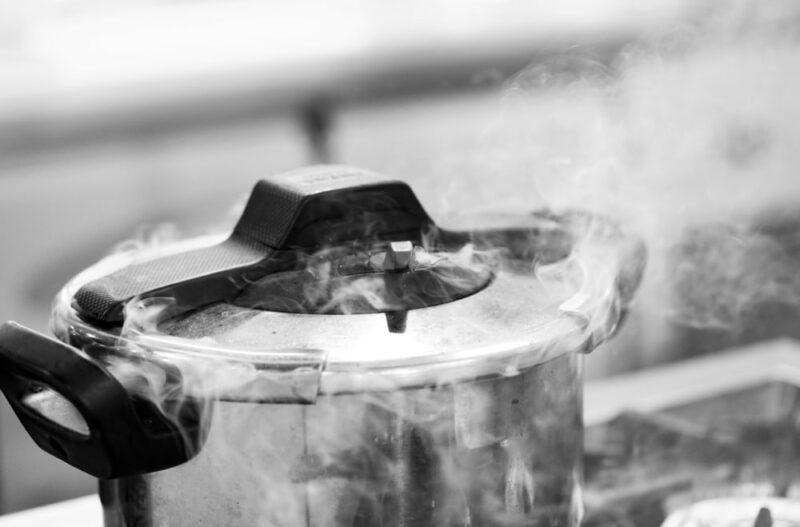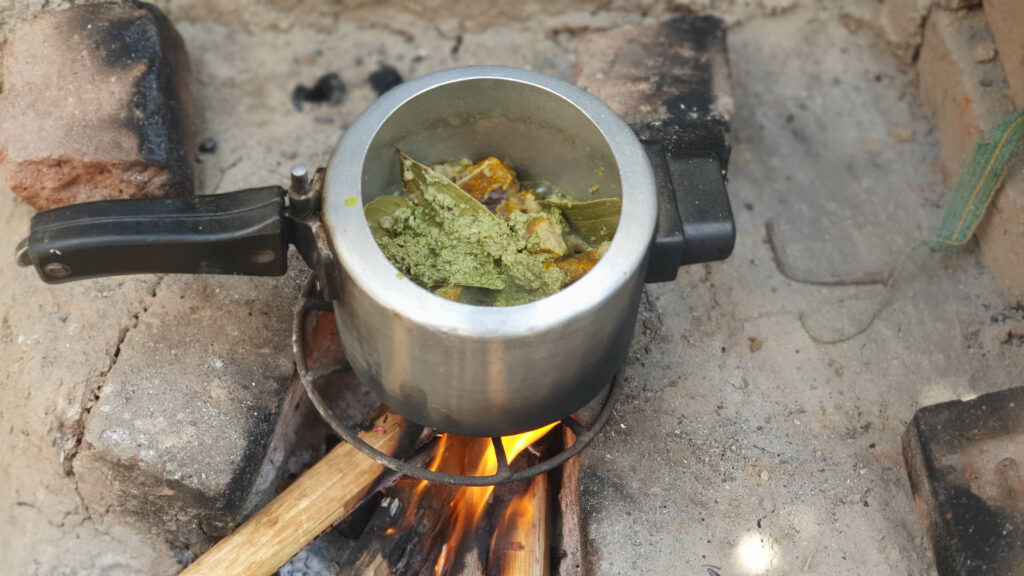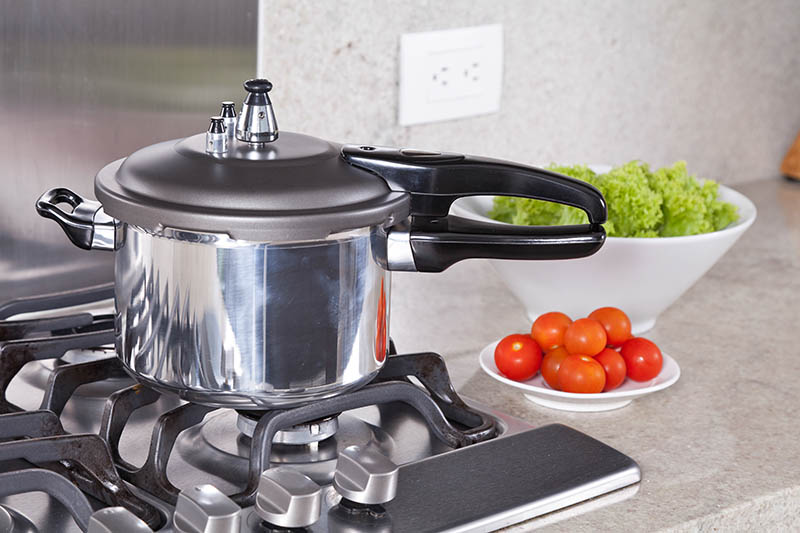How Does a Pressure Cooker Work? Types, Uses, Pros & Cons
-
Jana Blagojevic
- Last updated:

Pressure cookers are innovative appliances that function with the steam building inside a sealed pot. A pressure cooker will become your best friend if you are looking to cook a stew with vegetables or meat quickly. It will do all the work for you while providing you with a delicious and healthy meal. These appliances have been around for a long time and, with the rise of electric devices, are gaining newfound popularity. Large or busy families adore them because of their short preparation time and energy-saving properties.
While these appliances are valuable, there are many features that you need to know about them. Read on below to find out how a pressure cooker works and what benefits it can bring to your household.
How Does It Work?
The way a pressure cooker works is quite simple and functions with the use of steam pressure only. It begins with a sealed pot containing a valve at the top. The pot begins to heat up, reaching a boiling point of up to 250°F. This pot heats up more quickly because of the constantly rising pressure inside. You can think of this pot as a sealed chamber, which traps the steam the liquids inside produce when heated. The steam keeps increasing in the pot, never reaching the point of release. Since the liquid never effectively boils, the flavor of the food is undisturbed, and the aroma is absorbed entirely.
The lack of evaporation is why these pressure cookers work so quickly and efficiently to cook your food, forcing liquid and moisture into the food and cooking it thoroughly and evenly. The food cooked in pressure cookers is much more tender and has an improved flavor.

What Are the Different Types of Pressure Cookers?
When it comes to the different types of pressure cookers, there are only two main types; a stovetop pressure cooker and an electric pressure cooker. Both categories have their unique advantages and disadvantages. While the stovetop pressure cookers were the first generation of these amazing appliances, many people still enjoy using them solely. Electric pressure cookers are a relatively new innovation that brings forth an improved design, which some people may enjoy due to their efficiency and effortless use.
Stovetop Pressure Cookers
As we’ve mentioned above, stovetop pressure cookers are the first generation of these appliances, which are defined by the primary heating source and a pressure valve for controlling the amount of steam. These pressure cookers are affordable and simple in design. While they are simple to use, they require monitoring to ensure the correct amount of pressure is maintained. These models are also easily recognizable by their loud nature, especially when the valve releases steam. The second generation of the stovetop pressure cooker has the same features, although it is a lot quieter, which may be a convenient advantage for many households.
Electric Pressure Cookers
Electric pressure cookers are often considered to be the second generation of pressure cookers because of their new and innovative design. Their main difference from stovetop pressure cookers is the built-in heat source that these appliances have. They are portable and do not require sitting on the stove to produce heat. The best feature of these appliances is that they don’t need to be constantly monitored and are more efficient at preparing food. Their biggest downside is their higher price and being hard to acquire.

When Is It Used?
Pressure cookers are mostly used to prepare longer meals, such as tough meat, steamed vegetables, or stew. If you are looking for a way to add a unique aroma to your meals and keep the intense flavors intact, pressure cookers are the way to go. When you need to prepare a large meal for your family or friends and choose to make something that needs to cook for much longer, the pressure cooker can save you precious time.
You can cook beans, rice, chickpeas, or tender meat in less than an hour. The extra heat in a pressure cooker is also amazing for achieving a caramelized effect.
Advantages of Pressure Cookers
Pressure cookers have many advantages to them, which many passionate cooks love and appreciate. They are efficient at cooking a meal fast and with maximum quality. They retain all the best flavors inside without losing any aroma during evaporation. They can work for a variety of different foods and meals, retaining nutrients and creating less mess during the preparation of meals. They are excellent at significantly reducing the cooking time, making them convenient for large meals and preparing dinner parties.
Because of the high-quality materials that go into making the pot—aluminum or stainless steel—they are highly durable and will serve you for many years, sometimes even decades.
Disadvantages of Pressure Cookers
While the advantages of using a pressure cooker overshadow the minor drawbacks, it is still necessary to mention them. Knowing all the qualities or features an appliance has is the key to understanding whether it is the right choice for your household. One of the significant disadvantages is the inability to open up the lid and check the food inside while it is cooking. The main principle of pressure cookers is the constant rising of the steam inside, without any room to evaporate, making it impossible to check on the food’s readiness constantly.
They sometimes tend to be loud and need a lot of getting used to. Another drawback is the possibility of overcooking your meals, which is likely to happen if you are a beginner at using this appliance.

 Frequently Asked Questions (FAQs)
Frequently Asked Questions (FAQs)
Is pressure cooking healthier than boiling?
Research shows that pressure cooking promotes easier digestion and preserves nutrients much better than any other type of cooking. Compared to boiling, pressure cooking also destroys more anti-nutrients, which are accountable for preventing the absorption of nutrients through food. No research is complete or entirely proven, but other studies have shown increased antioxidant activity in foods prepared with pressure cookers.
Is using a pressure cooker easy?
Getting used to a pressure cooker can be challenging, but these appliances are pretty easy and safe to use. The biggest issue, in the beginning, is learning not to overcook your food and getting used to the fact you cannot open the lid and check on the taste of the food. There are two ways to control the pressure inside the pressure cooker; moving the release valve to start releasing the pressure or letting the cooker slowly release the steam and pressure by itself.
Nevertheless, using them is quite simple and requires only monitoring from time to time, without any adjustments needed. You can simply add all your ingredients and let the pressure cooker achieve the perfect boil.
Conclusion
Everyone who has cooked a large meal for a family or guests knows how tiring and messy those preparations can get. If you frequently need to prepare large but delicious meals, a pressure cooker is an ideal appliance for your household. This fantastic gadget will quickly stir up any desired feast with shortened preparation time and an improved flavor. Cooking meat and vegetables will become a fun and efficient experience, allowing you to finish other tasks while preparing your meal.
Featured Image Credit: Prarinya, Shutterstock
Contents
